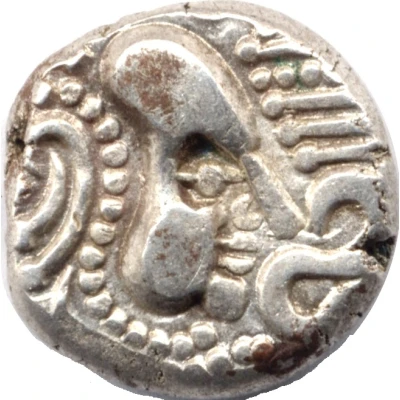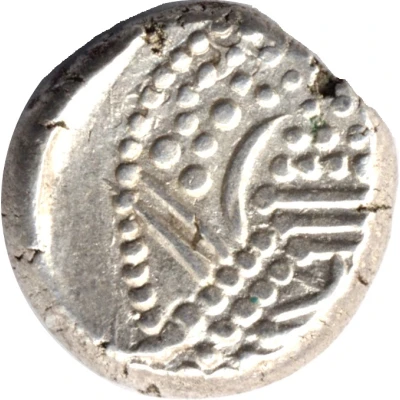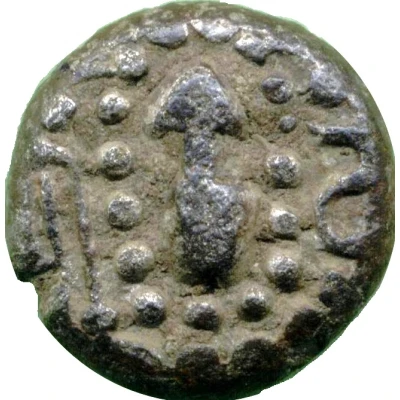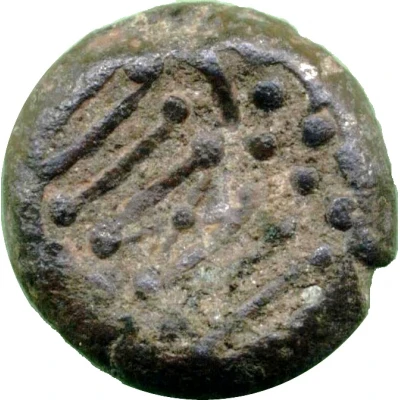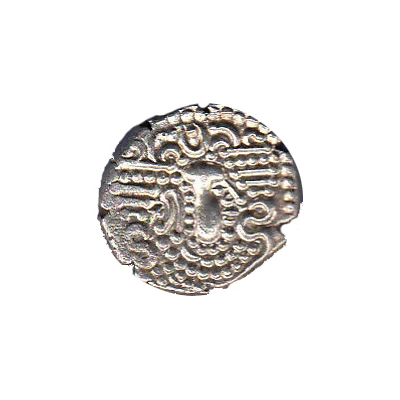
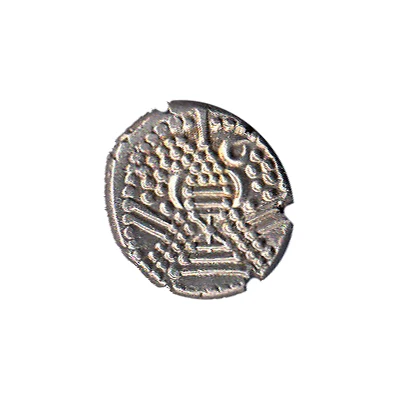

© Sujit
Gadhaiya Paisa Rajputana and Gujarat Region ND
| Silver | 4.2 g | 17.35 mm |
| Issuer | Gadhaiya (Indian Northern Dynasties) |
|---|---|
| Type | Standard circulation coin |
| Years | 800-950 |
| Value | 1 Drachm |
| Currency | Drachm (543-1390) |
| Composition | Silver |
| Weight | 4.2 g |
| Diameter | 17.35 mm |
| Shape | Round (irregular) |
| Demonetized | Yes |
| Updated | 2024-10-05 |
| Numista | N#54634 |
|---|---|
| Rarity index | 53% |
Reverse
Stylized Fire Altar and Moo (?)
Edge
Plain
Comment
Crude copy of Sassanian Coinage, Also Known as "Gadhiya Paisa". It is believed that the level of abstractism and crudeness is higher in later coins of this type. Also the % of silver content is seen to have been reduced.Refer to Plat XXV (11-16) in "Catalogue of the Coins in the Indian Museum, Calcutta - Vol. I(c) - Persian Medieval, South Indian and Miscellaneous coins" - by Vincent A Smith (1906)
Pre-history of the state:
The Sassanids, shortly after victory over the Parthians, extended their dominion into Bactria during the reign of Ardashir I around 230 CE, then further to the eastern parts of their empire in western Pakistan during the reign of his son Shapur I (240–270). Thus the Kushans lost their western territory (including Bactria and Gandhara) to the rule of Sassanid nobles named Kushanshahs or "Kings of the Kushans". Kartir, a high-priest that served as advisor to at least three of the early kings, instigated the persecution of non-Zoroastrians, that is, Christians, Buddhists, Jews, Hindus and – in particular – the Manichaeans, who were primarily in and from the eastern territories. The persecution ceased during the reign of Narseh (r. 293–302). Around 325, Shapur II was directly in charge of the southern part of the territory, while in the north the Kushanshahs maintained their rule until the rise of the Kidarites. The decline of the Kushans and their defeat by the Sassanids led to the rise of an indigenous Indian dynasty, the Guptas, in the 4th century. In 410, the Hephthalites or Indo-Hephthalites conquered Bactria and Gandhara, thus temporarily replacing the Indo-Sassanids.
Interesting fact
One interesting fact about the Gadhaiya Paisa coin is that it was used as a mode of exchange in the Rajputana and Gujarat regions of India during the 9th to 13th centuries, despite not being officially issued by any imperial power. It was widely accepted and used for trade, indicating the strong economic and cultural ties between these regions.
Price
| Date | Mintage | VG | F | VF | XF | AU | UNC |
|---|---|---|---|---|---|---|---|
| ND (800-950) | - | - | - | - | - | - |
Values in the table are based on evaluations by sales realized on Internet platforms. They serve as an indication only for Gadhaiya Paisa (Rajputana and Gujarat Region) ND (800-950) coin.
